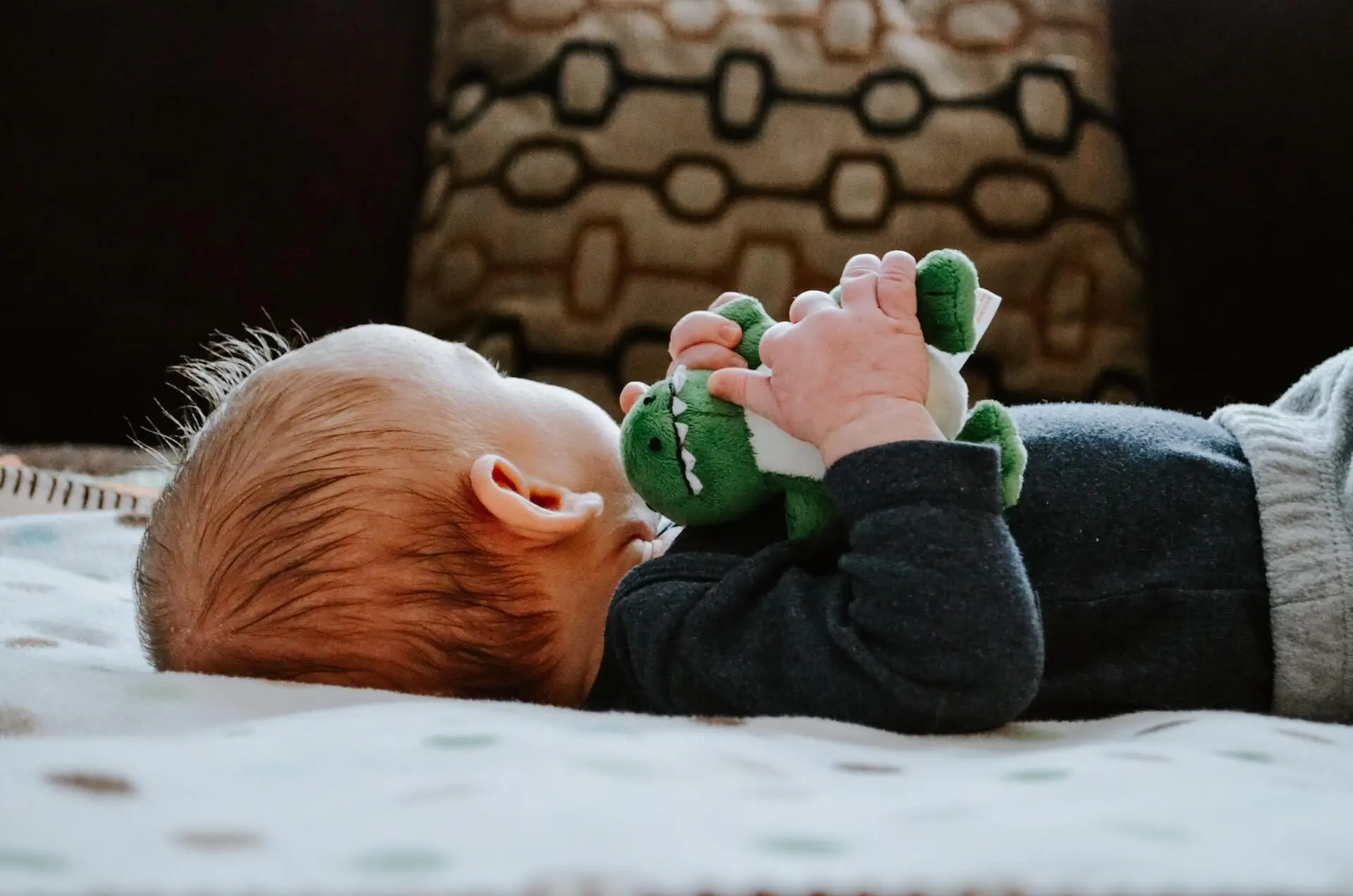Introducing a stuffed animal to a baby’s crib can bring comfort and companionship. However, ensuring the safety of your little one is crucial. Knowing whether it’s appropriate to put a stuffed animal in a crib is essential for fostering a safe sleeping environment.
This article will discuss the appropriate age at which a baby can sleep with stuffed animals. We’ll also highlight crucial safety measures before placing stuffed animals in a baby’s bed.
When Can a Baby Start Sleeping With Stuffed Animals?
The timing for when a baby can start sleeping with stuffed animals varies, but it is generally recommended to wait until the baby is at least 12 months old. Asphyxiation is less of a concern because most infants have developed the motor skills necessary to pull items away from their faces by this point.
Individual aspects, such as the baby’s.However, the baby’s developmental milestones and ability to control movements should also be considered. Consulting with a pediatrician is advisable before introducing stuffed animals into the crib.
Safe sleep practices should always be followed, keeping stuffed animals away from the baby’s face and avoiding large or fluffy ones that could increase the risk of suffocation.

Regularly inspect the stuffed animals for loose parts or choking hazards. Ultimately, prioritize your baby’s safety and consult healthcare professionals for guidance.
Safety Precautions for Stuffed Animals in Baby’s Crib
Safety precautions are crucial when introducing stuffed animals to a baby’s crib. Choking hazards and other potential dangers can be avoided by avoiding toys with small parts or dangling accessories.
Limit the number of stuffed animals to reduce the risk of suffocation or entanglement, choosing smaller-sized ones appropriate for the baby’s age.

Maintain a regular inspection for any damage symptoms, such as frayed seams or missing filling, and discard any harmed toys. When placing stuffed animals in the crib, keep them away from the baby’s face and ensure they don’t obstruct breathing.
Wash and Disinfect Stuffed Animals Before Giving to Baby
It’s important to wash and disinfect stuffed animals before giving them to your baby. Stuffed animals can collect dust, dirt, and harmful bacteria, so cleaning them helps maintain a hygienic environment. Check the care instructions on the tags and gently use a mild detergent to machine-wash them.
Put the stuffed animals in a pillowcase or wash bag for safekeeping. After washing, dry them thoroughly by hanging them outside or on low heat in the dryer. Make sure no moisture is left so mold and mildew don’t form.
For extra disinfection, use a fabric-safe disinfectant spray or freeze the stuffed animals in a sealed plastic bag for a few hours. Regularly washing and disinfecting stuffed animals will ensure a cleaner and safer sleep environment for your baby.
Only Place Small Stuffed Animals in the Crib
When placing stuffed animals in your baby’s crib, prioritize safety by choosing small toys that your baby can comfortably grasp.
The risk of suffocation and being trapped is increased with the use of larger stuffed animals. Small stuffed animals are less likely to cover your baby’s face or obstruct their breathing during sleep.
Avoid oversized or bulky toys that can cover your baby’s nose or mouth. Make sure the stuffed animals do not have loose parts or choking hazards. By adhering to these recommendations, you can reduce the chances of an accident while still enjoying your pet’s company. Prioritize your baby’s safety and regularly monitor their sleep environment.
Keep a Close Eye on Your Baby’s Development
Monitoring your baby’s development is important when introducing stuffed animals to their sleep environment. Keep an eye on their independence in movement and positioning, as well as their sleeping habits and actions.
You may want to wait to put plush animals in the crib if your baby is still practicing motor skills like rolling over or sitting up.
If you notice any signs of discomfort, restlessness, or difficulty breathing with a stuffed animal present, consider removing it temporarily.
Regarding the usage of stuffed animals in the crib, always heed the advice of physicians and safety experts, and keep up with any new suggestions or cautions relating to baby-safe sleep habits. Prioritize your baby’s safety and well-being throughout the process.
Conclusion
In conclusion, introducing stuffed animals to a baby’s sleep routine requires careful consideration and adherence to safety guidelines.
It is important to wait until the appropriate age, follow safety precautions, wash and disinfect the toys, and choose small-sized stuffed animals.
A secure and comfortable sleeping environment can be provided by closely checking your baby’s growth and talking with medical professionals.


